Commenti / Domande (569)
![]() Francis Hanoteau ha scritto:
Francis Hanoteau ha scritto:
Bonjour j ai un peut de mal a comprendre ! vous dite À 49-59-61-63-65-67-69 cm de hauteur totale (ajuster pour que le rang suivant soit le rang 7 des diagrammes M1, M3 et M4), rabattre toutes les mailles, EN MÊME TEMPS, diminuer 24-24-26-26-36-36-36 m dans le diagramme au dernier rang – voir DIMINUTIONS ! je tricote la taille XL le ( EN MÊME TEMPS ) diminuer 24-24-26-26-36-36-36 m dans le diagramme au dernier rang – voir DIMINUTIONS t doit se faire sur la meme ligne ou avant ?
04.02.2019 - 23:00DROPS Design ha risposto:
Bonjour Mme Hanoteau, en taille XL, vous tricotez jusqu'à ce que l'ouvrage mesure 65 cm, mais le rang suivant doit être le rang 7 de M.1, M.3 et M.4 (= rang avec une torsade), tricotez quelques rangs de plus ou de moins en fonction de votre tension/hauteur en cm. Au rang suivant, ne tricotez pas les torsades, mais diminuez 36 mailles à intervalles réguliers comme indiqué sous DIMINUTIONS. On va ainsi éviter que le rang des mailles rabattues ne soient plus large que le reste de l'ouvrage, les torsades nécessitant plus de mailles en largeur. cette vidéo montre comment diminuer et rabattre en même temps. Bon tricot!
05.02.2019 - 09:12
![]() Fabi ha scritto:
Fabi ha scritto:
Buonasera, ho visto che sono state corrette la misura delle spalle nel grafico, ma quelle per lo scollo centrale sul davanti sono sempre le stesse? Quindi su una XL lo scollo sarà a 64 cm e la chiusura delle spalle a 76 cm? È corretto o devo alzare anche lo scollo centrale? Potete per favore darmi conferma? Grazie
03.02.2019 - 21:25DROPS Design ha risposto:
Buonasera Fabi. Per lo scollo chiude le maglie a 64 cm; per le spalle a 67 come per il dietro. I 76 cm che vede nel grafico comprendono anche la parte della spalla lavorata proseguendo la manica. La fotografia può aiutarla a capire meglio. Buon lavoro!
03.02.2019 - 21:39
![]() Fabi ha scritto:
Fabi ha scritto:
Buonasera, non capisco il suggerimento per le diminuzioni: Diminuire come segue a seconda del diagramma: M.1 (= 44-44-52-52-52-52-52 m): 10-10-12-12-12-12-12 m. M.3 (= 8 m): 2 m. M.4 (= 10 m): 3 m. M.5 (= 16 m): 6 m. Se devo chiudere tutte le maglie, non capisco dove devo diminuire 36 m (taglia XXL). Potete spiegarmi meglio? Grazie
02.02.2019 - 13:48DROPS Design ha risposto:
Buonasera Fabi. Deve diminuire sullo stesso ferro di chiusura delle maglie. Nel suggerimento trova indicato come ripartire le diminuzioni; p.es nel diagramma M3, formato da 8 m, deve diminuire 2 maglie. Buon lavoro!
02.02.2019 - 21:54
![]() Fabi ha scritto:
Fabi ha scritto:
Buonasera, sono arrivata alla chiusura degli scalfi per le maniche...bisogna lavorare il primo ferro chiudendo le 3 maglie che precedono e le 3 maglie che seguono ciascun segno, ma come si fa a chiudere le 3 maglie che precedono il segno? Mi resta il buco... Il lavoro rimane su un unico ferro circolare e si lavora quindi con due gomitoli? Le trecce devono rimanere all’interno o all’esterno del circolo? Potete aiutarmi per favore...sono molto confusa Grazie
01.02.2019 - 23:24DROPS Design ha risposto:
Buongiorno Fabi. Per chiudere le maglie, può chiudere le ultime 3 m prima del segno al giro precedente, poi le 3 m successive, lavora fino a 3 m prima del segno, chiude 6 m e poi lavora le restanti m. Prosegue solo sul dietro e poi sul davanti (oppure insieme ma con due gomitoli separati). Le trecce continuano ad essere lavorate sul diritto del lavoro. Buon lavoro!
02.02.2019 - 08:25
![]() Orietta Percivale ha scritto:
Orietta Percivale ha scritto:
Per fare il motivo sulla manica bisogna seguire M5 poi questa ho visto che è una maglia fatta su ferri circolari io ho ferri diritti e non so lavorare con ferri circolari. Vi ringrazio e porgo ossequi. ORIETTA
29.01.2019 - 21:43DROPS Design ha risposto:
Buongiorno Orietta. Per lavorare con i ferri dritti, può avviare la metà delle maglie indicate per il davanti / dietro e lavorare le due parti separatamente. Aggiunga 1 m vivagno ai lati per la cucitura. Per la manica, avvia le maglie aggiungendo una maglia vivagno ai lati per la cucitura. Sulla manica lavora i diag. M2, M3, M5. Per un aiuto più personalizzato, può rivolgersi al suo rivenditore Drops di fiducia. Buon lavoro!
30.01.2019 - 09:12
![]() Tanya ha scritto:
Tanya ha scritto:
Hi, thank you for your response. I'm not working on the sleeves yet - I'm still knitting the body, so I'm doing the M2 increases for the body. How do I work these increases? Thanks
21.01.2019 - 15:26DROPS Design ha risposto:
Dear Tanya, you can work the stitch on each side of both markers in both front and back loop - in pattern = with K or P - as explained previously . Happy knitting!
21.01.2019 - 16:31
![]() Tanya ha scritto:
Tanya ha scritto:
Also, if the increases are supposed to be worked so they fit the pattern, how do I do that? Right now I'm on row 2 of M2, so I should be knitting and purling the same stitches as row 1. I don't know how to maintain this while also incorporating new stitches that fit into the pattern.
20.01.2019 - 03:23DROPS Design ha risposto:
Dear Tanya, at the beg of round the new stitches should be worked as the previous stitch in diagram (if 1st st should be worked as a K stitch, Purl the new st, if 1st st should be a P stitch, K the new st). At the end of round, work the new st as the next st in diagram (if the next st should be a K st, work it K if it should be a P st, Purl it). Happy knitting!
21.01.2019 - 10:43
![]() Tanya ha scritto:
Tanya ha scritto:
Hi, when it says work the increases in M2, can each increase be added in the same way using one of the techniques shown in the tutorial video, or are they supposed to be either knit/purl increases so they fit the pattern?
20.01.2019 - 02:20DROPS Design ha risposto:
Dear Tanya, you can work the first and last stitch round into front and back loop (= 1 st on each side of the marker mid under sleeve) and work the new sts so that M.2 is growing at the beg and at the end of round. Pattern may not match on every round, but should match in each M.2 section. Happy Knitting!
21.01.2019 - 10:42
![]() Matt ha scritto:
Matt ha scritto:
For the sleeve increases, what does "Work inc sts into M.2 as you go along" mean specifically? Do you mean it's going to go: Marker, then a bunch of knit stitches (17 on each side of the marker in size L), then M.2? Or do you mean that the first increase stitch past the marker would be last stitch of new M.2, i.e. after 4 stitches I'll have added an additional M.2 between the original M.2 and the marker? Thanks.
19.01.2019 - 19:40DROPS Design ha risposto:
Dear Matt, you are increasing mid under sleeve, ie whare round start and ends with M.2. Work the increased stitches mid under arm so that pattern continues both at the beg and at the end of the round - it may not match mid under sleeve. Happy knitting!
21.01.2019 - 10:09
![]() Berit Brødsgaard ha scritto:
Berit Brødsgaard ha scritto:
Hej. Jeg kan ikke finde forklaring på hvad der menes når der skrives : " strik M3,M4, M3, M1 over de næste 44-44-52-52 ( Tel: 44-44-52-52) m..... hvad betyder det i paranteserne - Tel ?? Tillæg ?? Eller ? Jeg kan nemlig ikke fo omgangen til at gå op. Tak for ellers skønne letforståelige mønstre som jeg er storforbruger af. :-). Mvh. Berit
07.01.2019 - 11:57DROPS Design ha risposto:
Hei Berit. Jeg kan ikke finne noe sted der det står "( Tel: 44-44-52-52)" i den danske oppskriften? Men du strikker altså slik: 1 rapport M3, 1 rapport M.4, 1 rapport M.3 og så gjentar du M.1 over de neste 44-44-52-52 maskene. Du har nå strikket etter diagram over 70-70-78-78 masker. God fornøyelse
11.01.2019 - 11:20
Dreams of Aran#dreamsofaransweater |
|||||||||||||||||||
 |
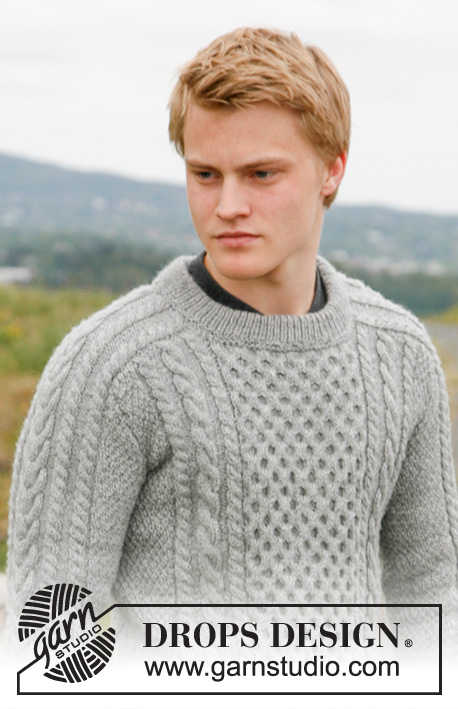 |
||||||||||||||||||
Maglione da uomo lavorato ai ferri con trecce in DROPS Karisma, DROPS Puna o DROPS Merino Extra Fine. Taglie: Da 13/14 anni alla XXXL.
DROPS 135-3 |
|||||||||||||||||||
|
PUNTO LEGACCIO (lavorato in tondo): 1 giro a dir, 1 giro a rov. MOTIVO: Vedere i diagrammi da M.1 a M.5. I diagramma mostrano il motivo sul diritto del lavoro. SUGGERIMENTO PER LE DIMINUZIONI (vanno fatte quando si chiudono le m per evitare che il bordo di chiusura sia troppo lento): Lavorare 1 m seguendo il diagramma, lavorare 2 m insieme, accavallare la 1a m lavorata = sono state diminuite 2 m. Diminuire come segue a seconda del diagramma: M.1 (= 44-44-52-52-52-52-52 m): 10-10-12-12-12-12-12 m. M.3 (= 8 m): 2 m. M.4 (= 10 m): 3 m. M.5 (= 16 m): 6 m. ---------------------------------------------------------------------------------------------------------------- MAGLIONE – BREVE RIASSUNTO DEL LAVORO: Lavorare le maniche verso l'alto, continuare sulla spalla e lungo il collo, al centro dietro. Diminuire le maglie del collo in cima alle maniche verso il davanti e continuare una piccola sezione della manica lungo la parte superiore del dietro e in seguito cucito al centro dietro, in modo che il collo è più alto sul dietro rispetto al davanti – vedere la Fig.1. DAVANTI/DIETRO: Si lavorano in tondo. Avviare 208-230-250-270-290-310-330 m sui ferri circolari n° 3.5 con il filato Karisma o Puna o Merino Extra Fine. Lavorare 4 giri a PUNTO LEGACCIO – vedere le spiegazioni sopra – e proseguire a coste 1 m a dir / 1 m a rov. Quando il lavoro misura 5 cm lavorare 2 giri a punto legaccio e ALLO STESSO TEMPO aumentare 20-10-6-6-22-18-18 m in modo uniforme durante l'ultimo di questi giri = 228-240-256-276-312-328-348 m. Inserire 2 segni, 1 all'inizio del giro e 1 dopo 114-120-128-138-156-164-174 m (= i segni indicano i lati del maglione). Passare ai ferri circolari n° 4 e lavorare il MOTIVO come segue - vedere le spiegazioni sopra: Taglie 13/14 – L: M.2 sulle prime 9-12-12-17 m, M.3, M.4, M.3, M.1 sulle 44-44-52-52 m successive, M.3, M.4, M.3, M.2 sulle 18-24-24-34 m successive, M.3, M.4, M.3, M.1 sulle 44-44-52-52 m successive, M.3, M.4, M.3, M.2 sulle ultime 9-12-12-17 m. Taglie XL-XXXL: M.2 sulle prime 8-12-17 m, M.3, M.4, M.3, M.4, M.3, M.1 sulle 52-52-52 m successive, M.3, M.4, M.3, M.4, M.3, M.2 sulle 16-24-34 m successive, M.3, M.4, M.3, M.4, M.3, M.1 sulle 52-52-52 m successive, M.3, M.4, M.3, M.4, M.3, M.2 sulle ultime 8-12-17 m. RICORDARSI LA TENSIONE DEL LAVORO! Proseguire in questo modo seguendo il motivo. ALLO STESSO TEMPO, quando il lavoro misura 9 cm aumentare 1 m da ciascun lato dei 2 segni (lavorare le m aumentate inserendole nel diagramma M.2) Ripetere gli aumenti ogni 6-8-8-9-9-9-10 cm per 5 volte = 248-260-276-296-332-348-368 m. Quando il lavoro misura 38-47-48-49-50-51-52 cm, chiudere 6 m per gli scalfi da ciascun lato (= chiudere quindi le 3 m che precedono e le 3 m che seguono ciascun segno). Lavorare ora il davanti e il dietro separatamente (assicurarsi che i ferri con le trecce siano sul diritto dopo aver diviso il lavoro). DIETRO: = 118-124-132-142-160-168-178 m. Lavorare avanti e indietro sul ferro circolare. Chiudere per gli scalfi da ciascun lato all'inizio di ogni ferro, come segue: 2 m per 2-2-2-2-2-3-4 volte e 1 m per 1-1-2-3-4-4-5 volte = 108-114-120-128-144-148-152 m. Proseguire seguendo il motivo. Quando il lavoro misura 49-59-61-63-65-67-69 cm (fare in modo che il ferro successivo sia la riga 7 dei diagrammi M.1, M.3 and M.4) chiudere tutte le m e diminuire ALLO STESSO TEMPO 24-24-26-26-36-36-36 m nei diagrammi durante il ferro di chiusura - vedere il SUGGERIMENTO PER LE DIMINUZIONI! DAVANTI: = 118-124-132-142-160-168-178 m. Chiudere per gli scalfi come per il dietro. Quando il lavoro misura 46-56-58-60-62-64-66 cm (fare in modo che il ferro successivo sia la 1a o la 5a riga del diagramma M.1) chiudere le 40-40-48-48-48-48-48 m centrali per il collo; ALLO STESSO TEMPO diminuire 10-10-12-12-12-12-12 m in modo uniforme sempre sulle 40-40-48-48-48-48-48 m chiuse – vedere il suggerimento per le diminuzioni. Lavorare ora ogni spalla separatamente. Al ferro successivo chiudere 2 m per il collo. Quando il lavoro misura 49-59-61-63-65-67-69 cm (assicurarsi di essere allo stesso punto del motivo come sul dietro) chiudere le m e diminuire ALLO STESSO TEMPO 7-7-7-7-12-12-12 m nei diagrammi durante il ferro di chiusura. MANICA DESTRA: Si lavora in tondo. Avviare 56-58-60-62-64-66-68 m sui ferri a doppia punta n° 3,5 mm con il filato Karisma o Puna o Merino Extra Fine. Lavorare 4 giri a punto legaccio e proseguire a coste 1 m a dir / 1 m a rov finché il lavoro non misura 10 cm. Lavorare 2 giri a punto legaccio, ALLO STESSO TEMPO aumentare 2 m in modo uniforme durante l'ultimo di questo giri = 58-60-62-64-66-68-70 m. Inserire un segno all'inizio del giro. Passare ai ferri a doppia punta n° 4 e proseguire seguendo il motivo al giro successivo come segue: M.2 sulle prime 5-6-7-8-9-10-11 m , M.3 2 volte, M.5, M.3 2 volte, M.2 sulle ultime 5-6-7-8-9-10-11 m. Proseguire in questo modo seguendo il motivo. ALLO STESSO TEMPO quando il lavoro misura 13-12-13-12-12-14-13 cm aumentare 1 m da ciascun lato del segno. Inserire le m aumentate nel diagramma M.2. Ripetere questi aumenti ogni 2-2,5-2-2-2-1,5-1,5 cm per 14-15-16-17-18-19-20 volte = 86-90-94-98-102-106-110 m. Quando il lavoro misura 45-50-50-49-49-48-48 cm chiudere le 6 m centrali sotto la manica (= chiudere 3 m da ciascun lato del segno) e proseguire lavorando avanti e indietro sul ferro (assicurarsi che il ferro con le trecce sia sul diritto quando si prosegue lavorando avanti e indietro sul ferro). Chiudere per l’arrotondamento della manica da ciascun lato, all’inizio di ogni ferro come segue: 2 m per 2-4-6-7-9-10-12 volte e 1 m per 12-10-8-8-6-6-4 volte = sul ferro rimangono 48 m per tutte le taglie. Il lavoro misura 55-60-60-60-60-60-60 cm. Da adesso in avanti, prendere le misure da questo punto! Proseguire seguendo il motivo sulle maglie rimaste finché il lavoro non misura 12-14-13-15-17-18-19 cm. Chiudere ora dalla parte destra del lavoro, all’inizio di ogni ferro sul diritto del lavoro, come segue: 24 m per 1 volta (ALLO STESSO TEMPO, lavorare insieme a 2 a 2 a dir 14 di queste 24 m prima di chiuderle), 3 m per 2 volte. Lavorare 3 ferri senza diminuzioni. Al ferro successivo, chiudere 1 m = sul ferro rimangono 17 m per tutte le taglie. Proseguire finché il lavoro non misura 19-21-22-24-26-27-28 cm. Chiudere tutte le m, e diminuire, ALLO STESSO TEMPO, 4 m in modo uniforme nel diagramma durante il ferro di chiusura. Tutta la manica misura ca. 74-81-82-84-86-87-88 cm. MANICA SINISTRA: Si lavora come la manica destra, ma chiudere le m in alto sul lato opposto, quindi all’inizio di ogni ferro sul rovescio del lavoro. CONFEZIONE: Cucire le maniche. Cucire le m delle spalle del davanti e del dietro alla parte della manica lavorata seguendo il diagramma M.3 (cucire nell’asola più esterna della m). Cucire la parte superiore delle maniche al centro sul dietro e cucirle al dietro. COLLO: Riprendere 94-94-108-108-108-108-108 m attorno al collo con il ferro circolare corto n° 3,5 e con il filato Karisma o Puna o Merino Extra Fine. Lavorare 4 giri a punto legaccio, ALLO STESSO TEMPO, nel corso dell’ultimo giro, aumentare 22-22-26-26-26-26-26 m in modo uniforme = 116-116-134-134-134-134-134 m. Proseguire a coste 1 m a dir/1 m a rov. Quando le coste misurano 8 cm lavorare 2 giri a punto legaccio e poi chiudere le m. Piegare il collo doppio verso il rovescio del lavoro e cucire insieme i due bordi a punto legaccio. |
|||||||||||||||||||
Spiegazioni del diagramma |
|||||||||||||||||||
|
|||||||||||||||||||
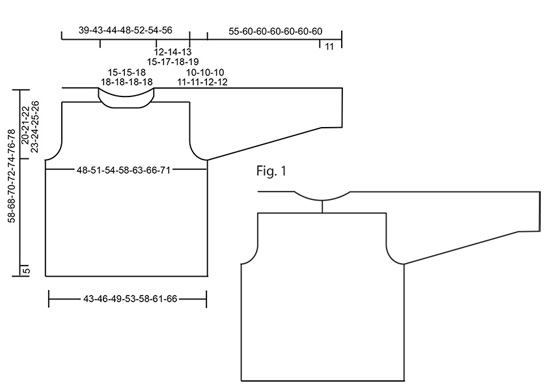 |
|||||||||||||||||||
 |
|||||||||||||||||||
Avete terminato questo modello?Allora taggate le vostre foto con #dropspattern #dreamsofaransweater o inviatele alla #dropsfan gallery. Avete bisogno di aiuto con questo modello?Troverete 18 video tutorial, una sezione per i commenti/domande e molto altro guardando il modello su www.garnstudio.com © 1982-2025 DROPS Design A/S. Ci riserviamo tutti i diritti. Questo documento, compreso tutte le sue sotto-sezioni, è protetto dalle leggi sul copyright. Potete leggere quello che potete fare con i nostri modelli alla fine di ogni modello sul nostro sito. |
|||||||||||||||||||








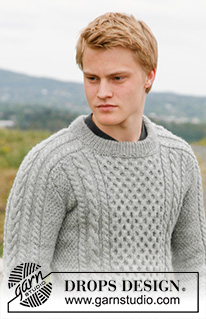



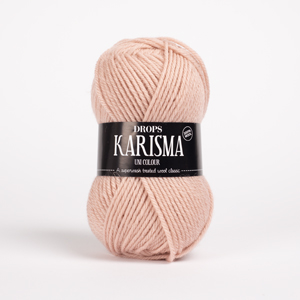


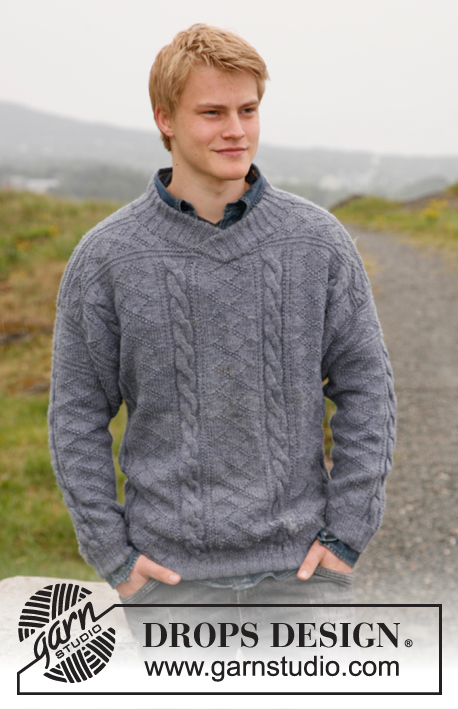


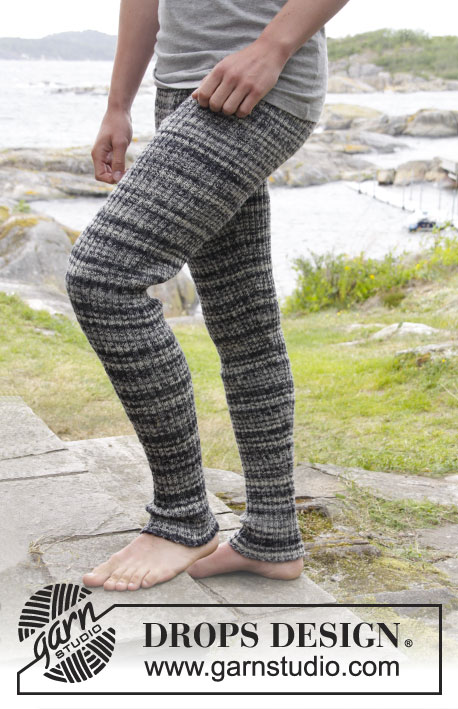
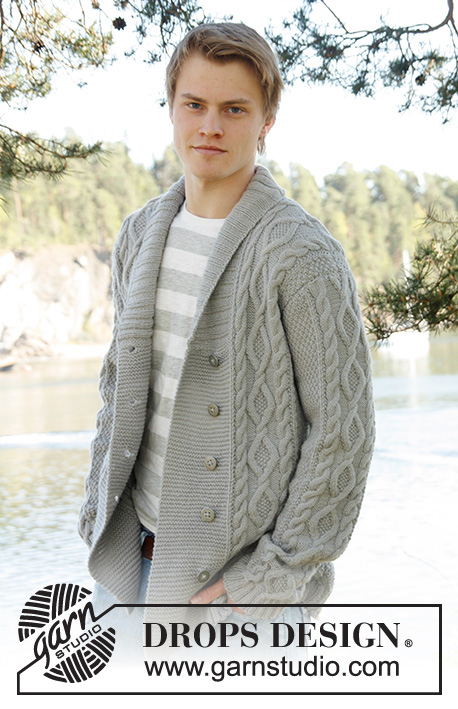





































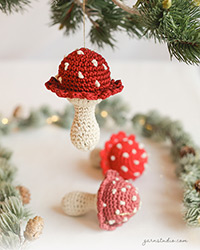
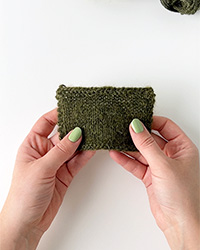
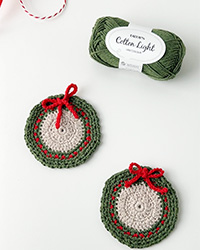
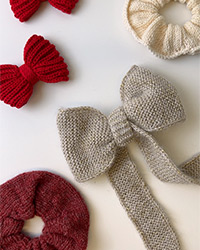
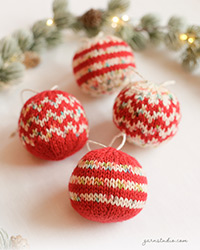
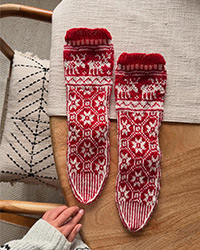
Lasciare un commento sul modello DROPS 135-3
Noi saremmo felici di ricevere i tuoi commenti e opinioni su questo modello!
Se vuoi fare una domanda, fai per favore attenzione a selezionare la categoria corretta nella casella qui sotto per velocizzare il processo di risposta. I campi richiesti sono indicati da *.